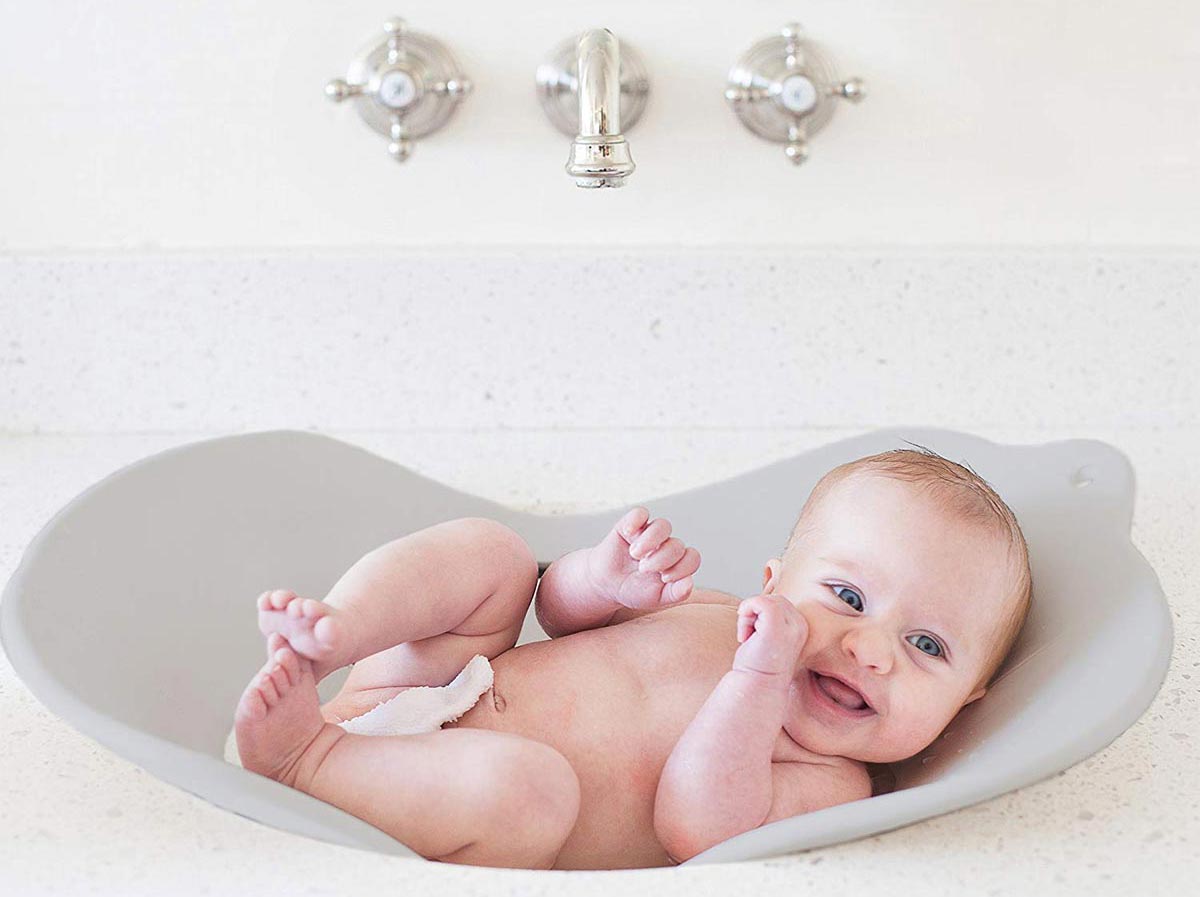
Bathing a baby
Sponge bathe a newborn
For the first week or so it’s best to give your infant sponge baths with a warm, damp washcloth. Wash his face and hands frequently, and thoroughly clean his genital area after each diaper change.
Bathing a baby in a bathtub
After the umbilical cord stump dries up, falls off, and the area heals, you can start giving your newborn a tub bath every few days. It’s easiest to use the kitchen sink or a small plastic baby tub filled with warm water instead of a standard tub.
Although some parents bathe their babies every day, until a baby is crawling around and getting into messes, a bath isn’t really necessary more than three times a week during the first year. Bathing your baby too often can dry out her skin.
Some babies find the warm water very soothing. If this is the case with your baby, it’s fine to let her linger. Others cry through the whole bath – that’s when you’ll want to get her in and out. Baths don’t need to take up a lot of time: Five minutes is long enough to get your baby clean before the water cools down too much.
When you do bathe your newborn, you may find it a little scary at first. Handling a wiggling, wet, and soapy little creature takes practice and confidence, so stay calm and maintain a good grip on her.
How to keep a baby safe in a bathtub
- Never leave your baby unsupervised, even for a minute. If you must leave the bathroom while your child is taking a bath, wrap her in a towel and take her with you.
- Don’t let your phone distract you from watching your child. Babies can slip under the water without making a sound.
- Never put your baby into a tub when the water is still running. (The water can quickly get too deep or hot.)
- Set your water heater to 120 degrees Fahrenheit. A child can get third-degree burns in less than a minute at 140 degrees.
- Never leave your child unattended. (Yes, it’s so important we listed it twice). A child can drown in less than an inch of water – and in less than 60 seconds.
Step by step: How to bathe your baby
- Gather all your bath supplies (including mild soap, a washcloth, and a plastic cup), and lay out a towel, a clean diaper, and clothes. Make sure the room is comfortably warm so your baby doesn’t get chilled.
- Fill the tub with about 3 inches of water that feels warm, but not hot, to the inside of your wrist – about 90 degrees Fahrenheit (32 degrees Celsius) or a few degrees warmer.
- Bring your baby to the bath area and undress her completely. (TIP: If your baby cries through every bath, leave the diaper on at first. It can give her an increased sense of security in the water.)
- Gradually slip your baby into the tub feet first, using one hand to support her neck and head. Pour cupfuls of bath water over her regularly during the bath so she doesn’t get too cold.
- Use mild soap and use it sparingly (too much dries out your baby’s skin). Wash her with your hand or a washcloth from top to bottom, front and back. Start by washing her scalp with a wet, soapy cloth. Rinse the soap from the cloth and use it to gently clean her eyes and face. If dried mucus has collected in the corners of your baby’s nostrils or eyes, dab it several times to soften it before you wipe it out. As for your baby’s genitals, a routine washing is all that’s needed.
- Rinse your baby thoroughly with cupfuls of water, and wipe her with a clean washcloth. Then very carefully lift her out of the tub with one hand supporting her neck and head and the other hand supporting her bottom. Wrap your fingers around one thigh. (Babies are slippery when wet.) If it’s possible, have another adult help by receiving your baby in a dry towel.
- Wrap your baby in a hooded towel and pat her dry. If her skin is still peeling from birth, you can apply a mild baby lotion after her bath, but this is generally dead skin that needs to come off anyway, not dry skin. Then diaper her, dress her, and give her a kiss on her sweet-smelling head.

